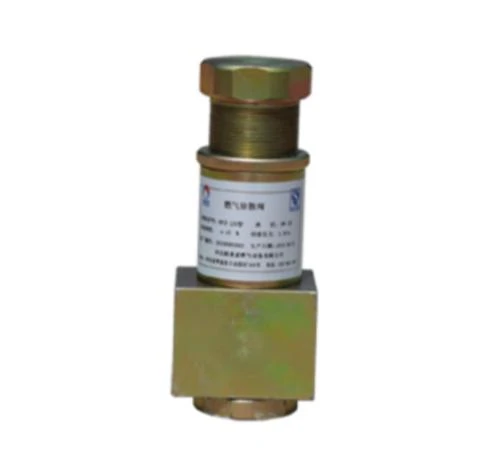
Dec . 07, 2024 02:18
Back to list
منظم ضغط الغاز الطبيعي
Understanding Natural Gas Pressure Regulators
Natural gas is a vital energy source that powers homes, industries, and vehicles around the world. It is crucial for the safe and efficient transportation of this gas that its pressure is managed effectively. This is where natural gas pressure regulators come into play. These essential devices ensure that gas pressure remains within safe and usable limits, allowing consumers to enjoy a steady gas supply without the risk of overpressure or underpressure conditions.
What is a Natural Gas Pressure Regulator?
A natural gas pressure regulator is a mechanical device designed to maintain the output pressure of natural gas to appliances and systems within a specified range. It does this by controlling the pressure of gas flowing from a higher-pressure source to a lower-pressure delivery system. Regulators are commonly found in residential setups and industrial applications alike, playing a pivotal role in the natural gas supply chain.
How Does a Pressure Regulator Work?
The operation of a pressure regulator is based on the principles of pressure management and flow control. At its core, a typical pressure regulator consists of a diaphragm, a spring, and an adjustment mechanism.
1. Pressure Sensing The diaphragm in the regulator senses the downstream pressure of the gas. When this pressure rises above a predetermined level, the diaphragm moves against the force exerted by the spring.
2. Flow Control The mechanism of the regulator allows for the adjustment of gas flow. If the downstream pressure exceeds the setpoint, the diaphragm will respond by closing off the valve, reducing the gas flow until the pressure normalizes.
3. Regulation Once the pressure falls back into the desired range, the diaphragm opens up again, allowing more gas to flow. This continuous monitoring and adjustment ensure a consistent pressure delivery to end users.
.
There are multiple types of natural gas pressure regulators, each suited for different applications
منظم ضغط الغاز الطبيعي

1. Single-stage Regulators These are typically used in low-pressure applications where the gas is delivered at a constant pressure. They are simpler and less costly than multi-stage options.
2. Two-stage Regulators Used where gas needs to be reduced from a very high pressure to a medium or low pressure. The first stage reduces the high incoming pressure to a medium level, which is then further reduced to the desired low pressure in the second stage. This two-stage process allows for better pressure stability and flow rates.
3. Watts and Breather Regulators These types are designed for specific applications that require specialized handling of pressure fluctuations and are often integrated with additional safety features.
Importance of Pressure Regulators
The significance of natural gas pressure regulators cannot be overstated. They not only contribute to the efficient functioning of natural gas systems but also play a critical safety role. If gas pressure exceeds acceptable levels, it can lead to devastating consequences, including equipment damage, gas leaks, or even explosions. Conversely, if the pressure is too low, appliances may not function properly, leading to inefficient energy use.
Moreover, these devices help in maintaining the integrity of the supply system, ensuring that gas quality is not compromised. Their presence assists in complying with safety regulations set forth by governmental and environmental agencies.
Maintenance and Safety Considerations
To ensure that pressure regulators operate effectively over their lifetime, regular maintenance is essential. This includes periodic inspections for leaks, dirt build-up, and mechanical wear. Any irregularities in performance should be addressed immediately to avoid potential hazards.
It's also crucial to ensure proper installation of pressure regulators, as an incorrectly installed device can lead to dangerous situations. Following manufacturer guidelines and local codes during installation can prevent many issues related to pressure regulation.
Conclusion
In conclusion, natural gas pressure regulators are essential components in the safe and efficient use of natural gas. By managing pressure and ensuring consistent flow, they protect both users and appliances from possible hazards. As the energy landscape continues to evolve, understanding the role of these regulators will be key in promoting safe and sustainable energy practices for the future. Whether in residential heating, cooking, or industrial processes, pressure regulators are at the forefront of natural gas management, ensuring that we can rely on this vital resource.
Latest news
-
Safety Valve Spring-Loaded Design Overpressure ProtectionNewsJul.25,2025
-
Precision Voltage Regulator AC5 Accuracy Grade PerformanceNewsJul.25,2025
-
Natural Gas Pressure Regulating Skid Industrial Pipeline ApplicationsNewsJul.25,2025
-
Natural Gas Filter Stainless Steel Mesh Element DesignNewsJul.25,2025
-
Gas Pressure Regulator Valve Direct-Acting Spring-Loaded DesignNewsJul.25,2025
-
Decompression Equipment Multi-Stage Heat Exchange System DesignNewsJul.25,2025

